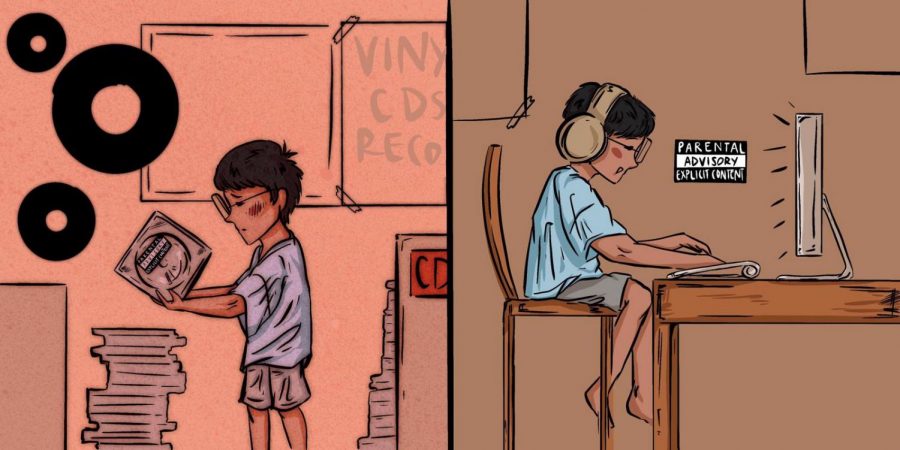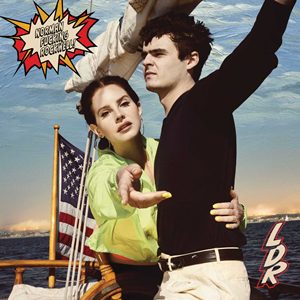Explicit and sexual songs leave lasting impacts on the youth of today
September 28, 2020
1980
“Oh, I wanna dance with somebody, I wanna feel the heat with somebody”
( “I Wanna Dance With Somebody”, Whitney Houston, 1980)
2010
“When I see your face
There’s not a thing that I would change
‘Cause you’re amazing
Just the way you are”
( “Just The Way You Are”, Bruno Mars, 2010)
2020
“Now from the top, make it drop that’s a-”
( “WAP”, Cardi B and Megan Thee Stallion, 2020)
Songs such as WAP, filled with explicit lyrics ranging from topics like sex to alcohol to drugs, have now taken up a majority of the Billboard Hot 100 slots. Yet this is no surprise, as it seems that songs with explicit lyrics and themes are just the new normal.
An analysis by Mark Bannister, a Data Science Manager at Spotify, finds that since 2001, “there hasn’t been a year without at least one single carrying a parental advisory label.” Bannister also explains that in 2017, a whopping 75% of songs in the Hot 100 were explicit. And this pattern has only exponentially grown since then.
But what caused this transformation of the music industry and since when did it become commonplace for popular songs to be explicit or sexual?
The answer is not a change in the music that the music industry produces. It’s a change in the way that music reaches audiences.
Back in 1980 we had the classic hit “I Wanna Dance With Somebody” by Whitney Houston. The song deals with feelings of attraction and wanting to find someone who’s willing to enjoy each other’s company.
A few decades later, Bruno Mars released another classic, “Just The Way You Are”. This song also deals with similar themes of love and attraction with lyrics like “And when you smile, the whole world stops and stares for a while.”
Almost a decade after Bruno Mars released “Just The Way You Are” Cardi B and Megan Thee Stallion released one of their most popular songs to date: “WAP”. These lyrics follow a similar theme of attraction, however, the song doesn’t deal just with wanting to dance or the idea of a perfect love story. It instead uses more explicit language and sexual imagery; a perfect example of the evolution of our generation’s taste in music.
However, explicit songs are not a recent development and they’ve been here all along. So what changed?
The difference is that music of every kind, both explicit and not, are available to people of all ages, and companies’ marketing strategies are now taking advantage of that.
Back before streaming services were created, the main way that audiences used to listen to new “trending” songs was through the radio, a media outlet that restricted both explicit content and lyrics. This meant that the most popular songs, or the songs that were commonly listened to on the radio, were not explicit. But according to Radio Ink , “In 2008 only 4% of Americans reported having no radio in their home, as compared to 32% today.” Even for those who didn’t listen frequently to the radio, options like CDs and records had “Parental Advisory” labels that attempted to disincentivize minors from buying explicit music. Unfortunately, this all changed with the introduction of music streaming.
Today, anyone with internet access can stream any song for free with zero restriction, through platforms such as YouTube and Spotify. According to the RIAA, 75% of the music industry’s recorded revenue came from streaming in 2018. With physical devices for music, like iPods and MP3 players on the decline, record labels are able to produce and distribute their content without much of the paperwork and regulation that came with music of the past. Producing an explicit song 20 years ago meant that it could only be distributed to an adult audience, giving the music industry a reason to actually produce and market non explicit music.
But, with the rise of streaming services, there is a more competitive environment for artists, as there are more music artists in the industry. This means that companies and record labels feel the need to capitalize and expand their market when given the opportunity. Subsequently, because of the lack of regulation on who companies are allowed to market their content to, companies and record labels find profit from the current youth.
Yet marketing can only garner a certain amount of attention. That’s when the influential power of social media comes into play. When a song trends on the Billboard Top 100 today, it is synonymous with a trend on social media. Looking back to WAP, the song is now frequently used on the app, Tik Tok, as a trending dance song with influencers of all ages dancing to it. As Sophie Miller, a writer for the Pipe Dream puts it, “Once a song becomes part of a TikTok trend, it is everywhere.” For example, the song “Old Town Road” by Lil Nas X ,that holds the title of the “longest-reigning Billboard Hot 100 No. 1 in the chart’s history”, first found its claim to fame on the app.
And this shift towards explicit songs is ultimately harmful. “KGOY” or Kids Getting Older Younger is an acronym that refers to the fact that today’s younger generation is increasingly exposed to content meant for older mature audiences. The difference in age between listeners and the artists they listen to means that younger audiences listen to content that they cannot necessarily relate to or even understand. Thus at a younger age, they start to have these “experiences” but through song lyrics.
This can have negative implications as a study from the Science Daily explains that sexual and explicit references in songs “can teach young men to be sexually aggressive and treat women as objects while often teaching young women that their value to society is to provide sexual pleasure for other.” The study continues, “this can lead [girls] to judge their personal worth on a sexual level only, leading to poor body image, depression, eating disorders, and substance abuse.” And even if these explicit lyrics do not change the behavior of young men, a study by Janet Lawrence and Doris Joyner of the Jackson State University finds that young males who listened to heavy metal rock music with sexually violent lyrics “ endorsed more stereotypic, negative attitudes toward women than males who listened to the easy-listening music control condition.” Thus when children are exposed to explicit content, it leaves lasting impressions which follow them into adulthood.
This however begs the question whether artists should censor themselves in order to prevent these harmful impacts that explicit music can bring. It is true that it is the artist’s freedom to express themselves and create their own form of art, therefore it’s not the artist’s responsibility to make their music appropriate. And this train of thought is one that many echo as it would be impossible for us to control the music an artist produces.
Yet there are factors that can be controlled to prevent its harmful impacts. For instance, we can be mindful of the people that we are interacting and sharing this content with. When making a social media post its important to understand that the Internet is in fact a public space. If you normally would conduct yourself in a different way in public, this same behavior should be reciprocated in the digital domain.
But, at the end of the day there is no simple fix or one size fits all solution that eliminates all explicit songs. There is no way to limit or dictate the songs that audiences listen to. The music industry or even parental advisory labels cannot tell you what you should or should not listen to. It is only up to you, the listener, to weigh for yourself the positives and negatives that the influence of this music holds. Whether its songs about dancing with somebody, a song about finding that perfect someone, or an explicit song about sex we can all be more cognizant of the way that explicit music can impact us.






